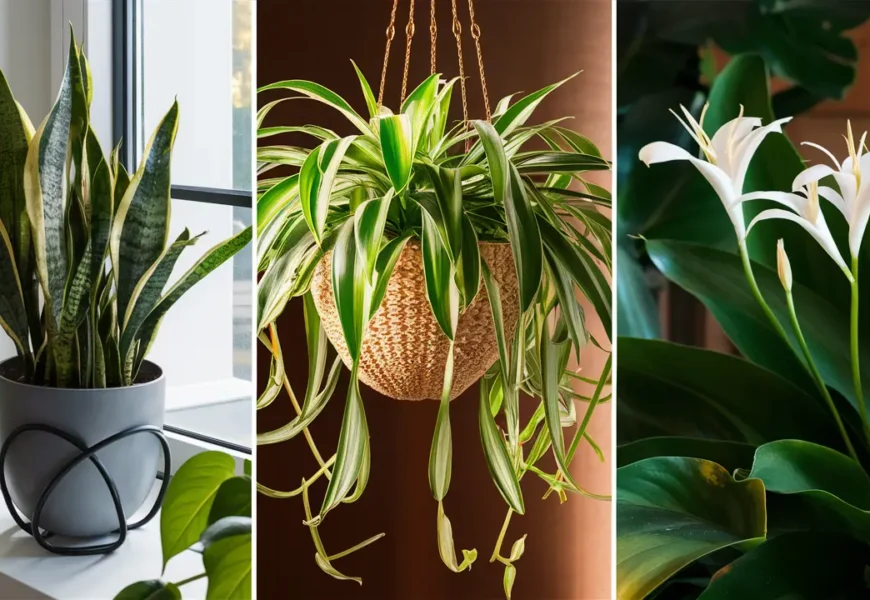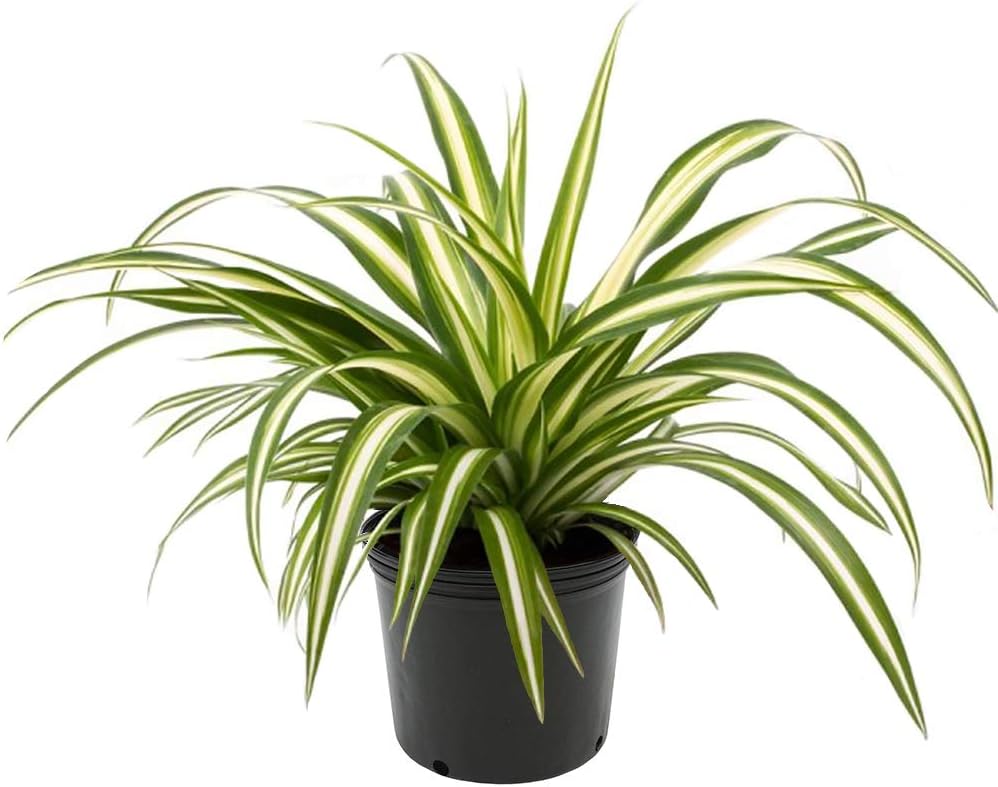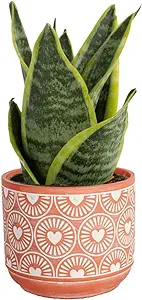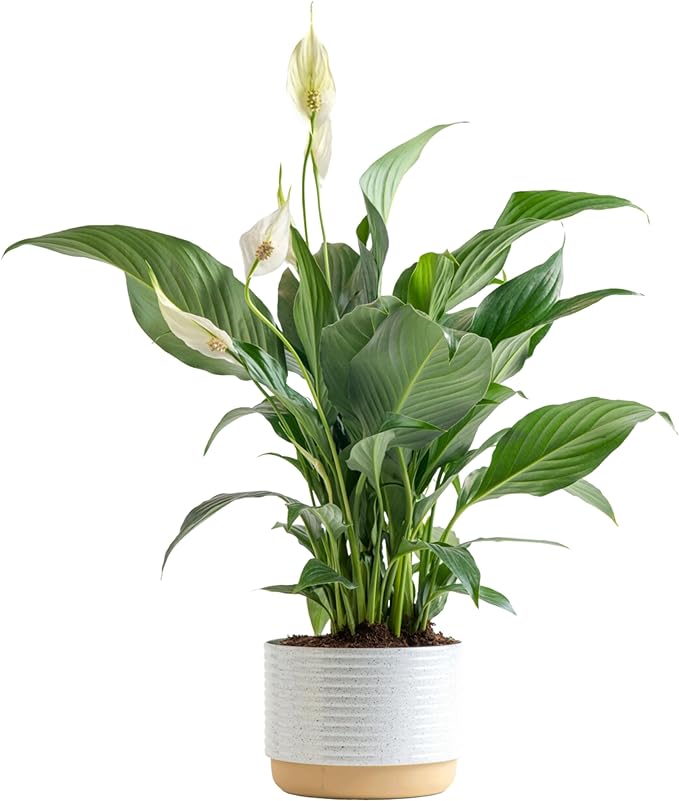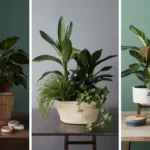West-facing windows hold a special allure in any home. They offer a direct connection to the sun’s golden rays, casting warm light and creating a cozy atmosphere.
Whether you’re a seasoned plant parent or just starting to explore the world of indoor gardening, these windows present an exciting opportunity to cultivate greenery that thrives in ample sunlight.
In this article, we’ll explore the enchanting world of houseplants perfectly suited for west-facing windows.
We’ll delve into the characteristics and care tips of three exceptional plants that not only flourish in bright, direct sunlight but also elevate the ambiance of your living space.
Table of Contents
Now, let’s embark on a journey to discover the perfect houseplants that will bring joy and vibrancy to your west-facing windowsill.
Top 3 Houseplants for West-Facing Windows
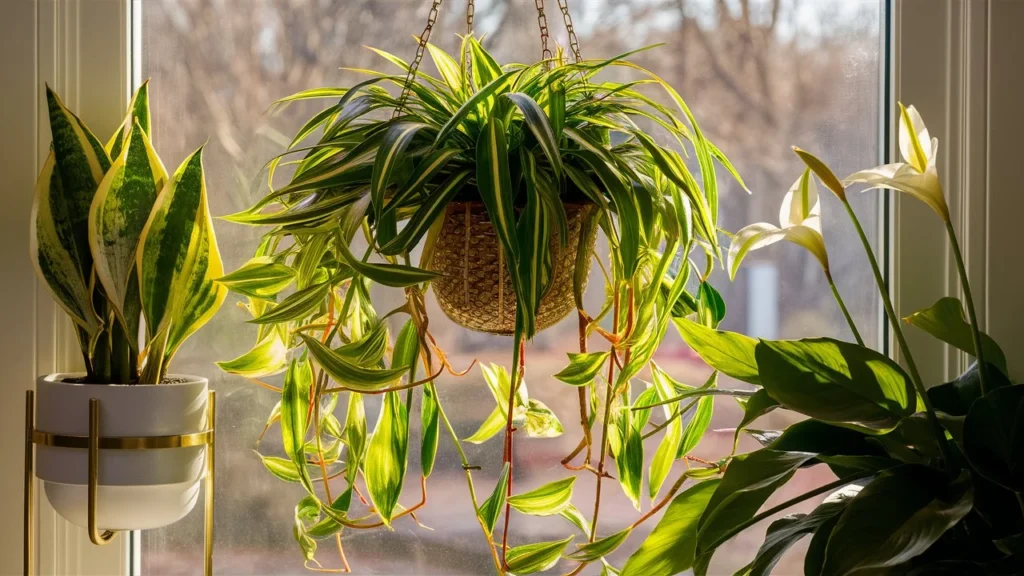
Plant 1: Spider Plant
The Spider Plant is renowned for its long, arching leaves that resemble spider legs, giving it a unique and captivating appearance. Its lush foliage adds a refreshing touch to any room.
Liven Up Your Space with the Easy-Care Spider Plant!
This beauty features cascading "spiderettes" and thrives in indirect sunlight.
Perfect for home or garden décor, it also purifies the air and is safe for pets!
- Care Tips:
Watering: Spider Plants prefer evenly moist soil. Water them thoroughly when the top inch of soil feels dry to the touch, but avoid overwatering to prevent root rot.
Sunlight Requirements: Place Spider Plants in a west-facing window where they can receive bright, indirect sunlight. They can tolerate some direct sun but may scorch if exposed to intense afternoon rays for extended periods.
Soil Preferences: Use well-draining potting mix with a balanced pH to ensure optimal growth and prevent waterlogging.
- Decorative Use:
Showcase Spider Plants in hanging baskets or on elevated plant stands to highlight their cascading foliage.
Pair them with trailing plants like Pothos or English Ivy for a lush and dynamic display.
Plant 2: Snake Plant
The Snake Plant, also known as Mother-in-Law’s Tongue, boasts stiff, upright leaves with striking variegation patterns. Its architectural form makes it a standout feature in any interior setting.
Liven up your home with the nearly indestructible Snake Plant!
This beauty is easy to care for, purifies your air, and comes in a decorative pot. Perfect for busy lives or anyone who struggles with plants!
- Care Tips:
Maintenance: Snake Plants are incredibly low-maintenance and can tolerate neglect. Allow the soil to dry out between waterings to prevent root rot, especially during the winter months.
Growth Considerations: Provide Snake Plants with bright, indirect sunlight for optimal growth. They can also thrive in low-light conditions, making them versatile options for various spaces.
- Design Versatility:
Incorporate Snake Plants into minimalist or modern decor schemes for a sleek and contemporary look.
Group them together in a cluster or mix and match different varieties to create visual interest and texture.
Plant 3: Peace Lily
The Peace Lily is renowned for its elegant, white blooms and glossy, dark green leaves. In addition to its aesthetic appeal, it is also known for its air-purifying properties, making it a popular choice for indoor environments.
Bring home a beautiful Peace Lily to add a relaxing, calm feel to any space.
These houseplants are natural air purifiers that help keep your indoor air fresh and clean.
Easily fits tabletop, shelf, living room, office, or bedroom decor
- Care Guidelines:
Temperature and Humidity: Peace Lilies thrive in warm, humid conditions. Aim to maintain a consistent temperature range of 65-80°F (18-27°C) and provide ample humidity by misting the leaves regularly or placing a humidity tray nearby.
- Functional Benefits:
Peace Lilies are effective at removing common indoor pollutants such as formaldehyde, benzene, and trichloroethylene from the air, helping to improve indoor air quality and create a healthier living environment.
With these three houseplants gracing your west-facing windowsill, you’ll not only enhance the beauty of your living space but also enjoy the many benefits of bringing nature indoors.
Conclusion
Bringing the beauty of nature indoors with houseplants tailored for your west-facing windowsill is a rewarding endeavor. Let’s recap the benefits and key takeaways from our exploration:
- Enhanced Ambiance: By carefully selecting houseplants that thrive in bright, indirect sunlight, you can transform your living space into a lush and inviting oasis.
The vibrant foliage and unique characteristics of each plant add texture and visual interest to your home decor.
- Health and Well-being: Beyond their aesthetic appeal, these houseplants offer practical benefits for your health and well-being.
Plants like Spider Plants, Snake Plants, and Peace Lilies are known for their air-purifying properties, helping to remove harmful toxins and pollutants from indoor air.
Additionally, caring for plants can have therapeutic effects, reducing stress and promoting relaxation.
- Exploration and Creativity: Embark on a journey of exploration as you experiment with different houseplants and discover the perfect combination for your west-facing windowsill.
Mix and match various varieties, play with different potting arrangements, and let your creativity flourish as you create a personalized indoor garden.
In conclusion, embracing the beauty of west-facing window bliss with houseplants is not only a delightful way to enhance your living space but also a fulfilling experience that nourishes the soul. So go ahead, indulge your green thumb, and revel in the joy of cultivating a thriving indoor garden.
Now, it’s your turn to embark on this green adventure and experience the transformative power of nature firsthand. Happy planting! 🌿✨
FAQ
1. What are west-facing windows and why are they special?
West-facing windows are those that face towards the west direction, allowing them to receive direct sunlight during the afternoon and evening hours. They are special because they provide ample sunlight exposure, which is beneficial for certain types of houseplants that thrive in bright light conditions.
2. What types of houseplants are suitable for west-facing windows?
Houseplants that thrive in bright, indirect sunlight are ideal for west-facing windows. Some popular options include Spider Plants, Snake Plants, and Peace Lilies, which can tolerate the intensity of afternoon sun without getting scorched.
3. How often should I water my houseplants in a west-facing window?
The frequency of watering depends on factors such as the specific plant species, potting mix, and environmental conditions. Generally, it’s best to water your houseplants when the top inch of soil feels dry to the touch. Avoid overwatering, as this can lead to root rot.
4. Can I place my houseplants directly in the sunlight of a west-facing window?
While houseplants suited for west-facing windows can tolerate some direct sunlight, it’s essential to monitor their exposure carefully. Intense afternoon sun can cause leaves to scorch, so it’s best to provide bright, indirect sunlight to prevent damage.
5. How can I incorporate houseplants into my home decor?
Houseplants can be incorporated into your home decor in various ways, such as placing them in decorative pots or planters, arranging them on shelves or plant stands, or hanging them in baskets. Get creative with your placement to add visual interest and elevate the ambiance of your space.
6. Are there any benefits to having houseplants in my home?
Yes, there are several benefits to having houseplants in your home. Aside from their aesthetic appeal, houseplants can improve indoor air quality by removing toxins and pollutants. They also have therapeutic effects, reducing stress and promoting relaxation.
7. How can I ensure my houseplants stay healthy and thriving?
To ensure your houseplants stay healthy and thriving, it’s essential to provide them with proper care. This includes watering them according to their specific needs, providing adequate sunlight, fertilizing occasionally, and repotting when necessary. Additionally, keep an eye out for signs of pests or diseases and address them promptly.

